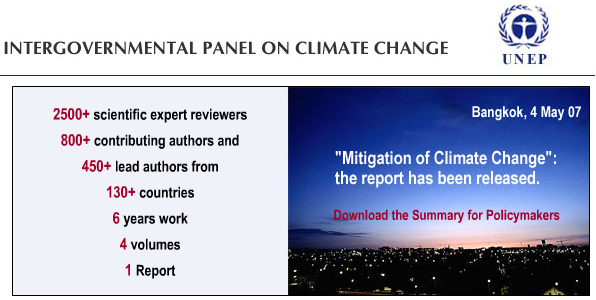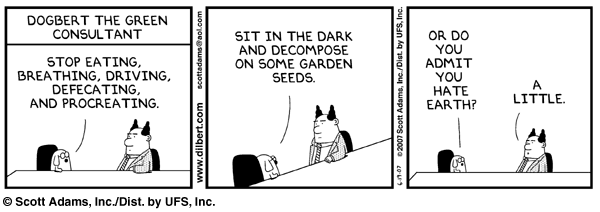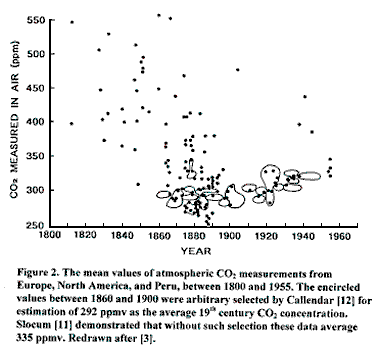What if it has all been a great big misunderstanding?
What if the AGW scare turned out to be nothing more than mass hysteria driven by leftist environmental zealots, aided and abetted by scientists whose computer simulations led them to the mistaken conclusion that they understood the infinitely complex machinations of our atmosphere and oceans?
What if, despite the
ad nauseam claims of the CoGW, climate change really
is a natural phenomenon not driven in any way by atmospheric CO
2 concentrations?
Dr. Tim Patterson of Carleton University in Canada is among the ever-increasing number of qualified scientists giving the lie to the notion that a consensus exists regarding climate change.
In 2001 Patterson brought a research team to a British Columbia fjord on a government-funded mission to determine why fish populations varied wildly from year to year. Neither the Canadian government nor Patterson's team were thinking about anthropogenic climate change when this project was initiated. The government, in true form, was simply interested in doing a better job of regulating the fishing industry.
As part of their research, Patterson's team took mud core samples from the stillwater bottom of the fjord. The cores contained sediment from about 5,000 years of the fjord's history, and as the team analyzed the core data, they unexpectedly came across information that may help us better understand what's really going on with our climate today. As Dr. Patterson related in a
June 20 article in the Financial Post:
Clearly visible in our mud cores are annual changes that record the different seasons: corresponding to the cool, rainy winter seasons, we see dark layers composed mostly of dirt washed into the fjord from the land; in the warm summer months we see abundant fossilized fish scales and diatoms (the most common form of phytoplankton, or single-celled ocean plants) that have fallen to the fjord floor from nutrient-rich surface waters. In years when warm summers dominated climate in the region, we clearly see far thicker layers of diatoms and fish scales than we do in cooler years. Ours is one of the highest-quality climate records available anywhere today and in it we see obvious confirmation that natural climate change can be dramatic. For example, in the middle of a 62-year slice of the record at about 4,400 years ago, there was a shift in climate in only a couple of seasons from warm, dry and sunny conditions to one that was mostly cold and rainy for several decades.
It's clear from Patterson's mud core data that the climate can "flip" quite rapidly, without any help from us.
That's all well and good, but the mud core data had another story to tell that flies directly in the face of what Dr. James Hansen, Al Gore, etc. have been preaching: the climate changes recorded in the 5,000 years of sediment correlate very strongly with the increases and decreases of output from our sun. Patterson notes that his findings corroborate those of "hundreds of other studies" conducted around the world.
However, as Patterson notes, solar output doesn't tell the whole story. Mr. Sun needs a little help to effect the kinds of climate change we've experienced in our planet's history, and CO
2 didn't get the job:
Despite this clear and repeated correlation, the measured variations in incoming solar energy were, on their own, not sufficient to cause the climate changes we have observed in our proxies. In addition, even though the sun is brighter now than at any time in the past 8,000 years, the increase in direct solar input is not calculated to be sufficient to cause the past century's modest warming on its own. There had to be an amplifier of some sort for the sun to be a primary driver of climate change. Indeed, that is precisely what has been discovered. In a series of groundbreaking scientific papers starting in 2002, Veizer, Shaviv, Carslaw, and most recently Svensmark et al., have collectively demonstrated that as the output of the sun varies, and with it, our star's protective solar wind, varying amounts of galactic cosmic rays from deep space are able to enter our solar system and penetrate the Earth's atmosphere. These cosmic rays enhance cloud formation which, overall, has a cooling effect on the planet. When the sun's energy output is greater, not only does the Earth warm slightly due to direct solar heating, but the stronger solar wind generated during these "high sun" periods blocks many of the cosmic rays from entering our atmosphere. Cloud cover decreases and the Earth warms still more.
The opposite occurs when the sun is less bright. More cosmic rays are able to get through to Earth's atmosphere, more clouds form, and the planet cools more than would otherwise be the case due to direct solar effects alone. This is precisely what happened from the middle of the 17th century into the early 18th century, when the solar energy input to our atmosphere, as indicated by the number of sunspots, was at a minimum and the planet was stuck in the Little Ice Age. These new findings suggest that changes in the output of the sun caused the most recent climate change.
In other words, Dr. Patterson's research supports the idea that as solar output varies, so does the amount of cosmic radiation reaching the earth. Weaker solar output means more cosmic radiation, leading to more cloud cover, leading to a cooler earth. Stronger solar output means less cosmic radiation, leading to less cloud cover, leading to a warmer earth.
In case the implications for the current non-debate debate aren't abundantly clear, Patterson adds:
By comparison, CO2 variations show little correlation with our planet's climate on long, medium and even short time scales.
If you want to know what is driving the changes in our climate, don't look to the sky -- look
beyond the sky.
Patterson closes by relating another profound implication of his research which is sure to be completely ignored:
Solar scientists predict that, by 2020, the sun will be starting into its weakest Schwabe solar cycle of the past two centuries, likely leading to unusually cool conditions on Earth. Beginning to plan for adaptation to such a cool period, one which may continue well beyond one 11-year cycle, as did the Little Ice Age, should be a priority for governments. It is global cooling, not warming, that is the major climate threat to the world, especially Canada.












 Headlines via e-mail
Headlines via e-mail


